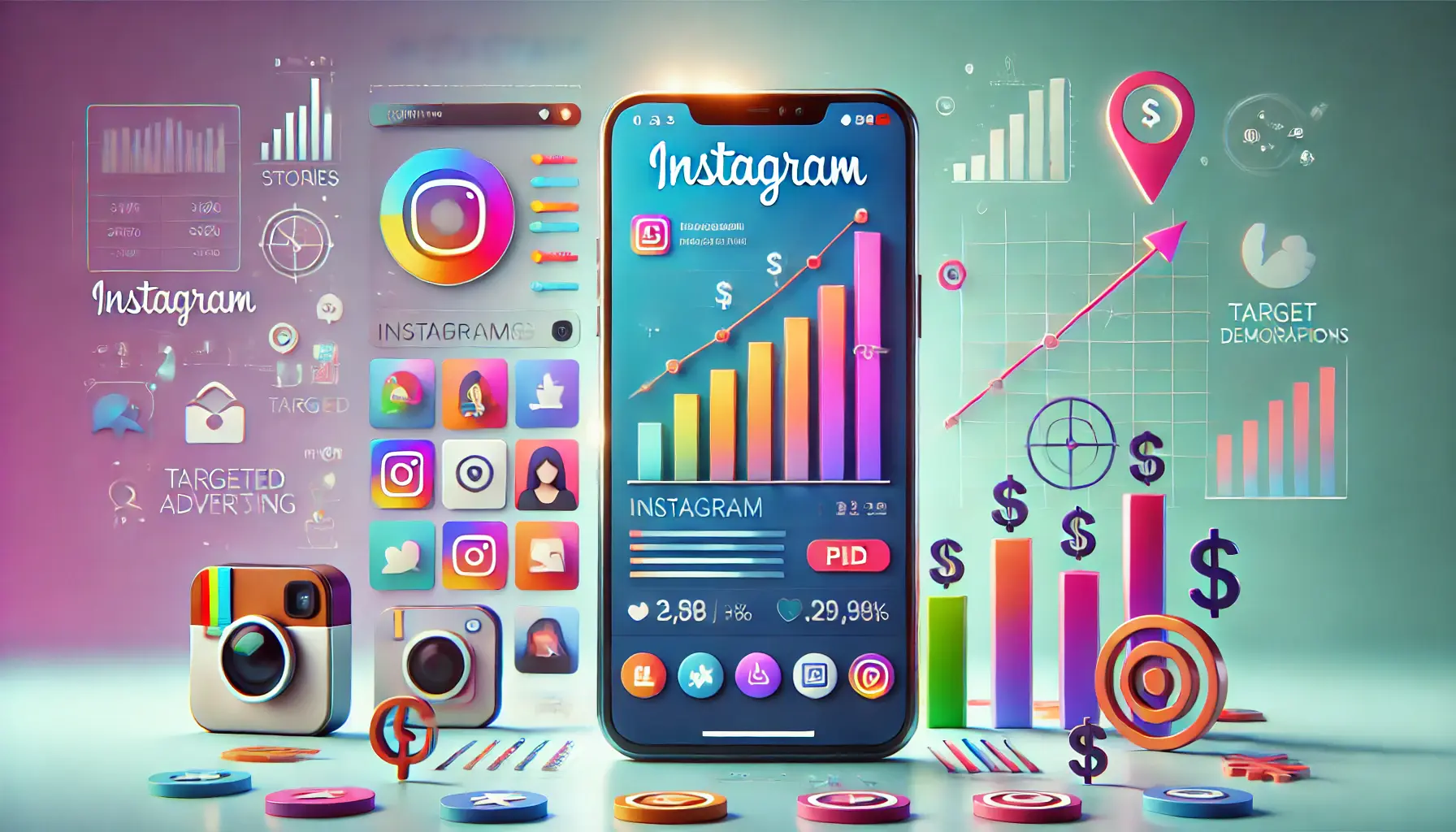The digital marketing landscape is continuously evolving, with various strategies emerging to enhance online visibility and search engine rankings.
Among these, the integration of paid advertising into link-building efforts has gained significant traction.
This approach, known as “Paid Ads for Link Building,” leverages the power of paid media to earn quality backlinks, a crucial factor in SEO success.
In this comprehensive exploration, we delve into the nuances of using paid ads to bolster link-building campaigns.
By understanding the synergy between paid advertising and organic link acquisition, businesses can unlock new avenues for enhancing their online presence and achieving SEO goals.
- The Intersection of Paid Advertising and Link Building
- Maximizing the Impact of Paid Ads on Link Building
- Understanding the SEO Benefits of Paid Ads for Link Building
- Creating Content That Attracts Backlinks Through Paid Ads
- Measuring the Success of Paid Ads in Link Building
- Overcoming Challenges in Paid Ads for Link Building
- Future Trends in Paid Ads for Link Building
- Conclusion: Harnessing the Power of Paid Ads for Effective Link Building
- Paid Ads for Link Building: Essential FAQs
The Intersection of Paid Advertising and Link Building
At first glance, paid advertising and link building might seem like distinct entities within the digital marketing realm.
However, a closer examination reveals a symbiotic relationship where each can complement and amplify the other’s effectiveness.
Paid ads, typically seen as a direct route to consumer engagement and sales, also hold potential for influencing link-building outcomes.
Utilizing paid ads for link building involves crafting campaigns that not only target potential customers but also appeal to content creators, bloggers, and influencers.
These digital assets, when shared or referenced, can lead to the acquisition of valuable backlinks.
This strategy hinges on the creation of compelling, shareable content that resonates with both direct audiences and those with the power to link back to your site.
Strategies for Leveraging Paid Ads in Link Building
Effective use of paid ads in link-building campaigns requires a strategic approach.
One key method is targeting ads towards industry influencers and content creators.
By placing ads on platforms frequented by these groups, businesses can increase the visibility of their content, encouraging organic shares and backlinks.
Another tactic involves using paid ads to promote high-quality, informative content rather than direct sales messages.
This content-centric approach aims to provide value to the audience, fostering engagement and natural link-building opportunities.
Key Point: Paid ads, when strategically aligned with content creation, can significantly enhance link-building efforts by targeting influencers and offering valuable, shareable content.
Maximizing the Impact of Paid Ads on Link Building
Integrating paid ads into a link-building strategy requires more than just a financial investment; it demands creativity and a deep understanding of your target audience.
To maximize the impact of your paid ads, consider the following elements:
Identifying the Right Platforms for Paid Ads
Choosing the right platforms for your paid ads is crucial.
Not all platforms will be equally effective for every business or industry.
Consider where your target audience, especially influencers and content creators, spend their time online.
This could range from social media platforms like LinkedIn or Instagram to industry-specific forums or websites.
Crafting Engaging Ad Content
The content of your ads should be engaging and relevant to your audience.
It should offer value, be it through informative content, compelling storytelling, or unique insights.
The goal is to create content that viewers will want to share or reference, leading to natural backlink opportunities.
- Utilize Visuals: Incorporate eye-catching images or videos to make your ads more engaging.
- Address Pain Points: Create content that addresses the specific needs or challenges of your audience.
- Encourage Interaction: Use calls-to-action that encourage viewers to engage with the content, such as sharing, commenting, or visiting a landing page.
Targeting and Retargeting Techniques
Effective targeting is key to ensuring your ads reach the right audience.
Utilize demographic, geographic, and psychographic data to refine your ad targeting.
Additionally, retargeting can be a powerful tool to re-engage individuals who have previously interacted with your content but have not yet linked back to your site.
Idea: Combining creative ad content with precise targeting can significantly increase the likelihood of your paid ads leading to quality backlinks.
Understanding the SEO Benefits of Paid Ads for Link Building
While the primary goal of paid ads in link building is to acquire quality backlinks, it’s essential to understand the broader SEO benefits this strategy offers.
These benefits not only enhance your site’s authority but also contribute to its overall search engine performance.
Enhancing Brand Visibility and Authority
Paid ads can significantly boost your brand’s visibility, exposing your content to a wider audience.
This increased exposure often leads to more organic backlinks, as more people become aware of your brand and its offerings.
Additionally, appearing on reputable platforms can enhance your brand’s authority, making it more likely for influencers and content creators to reference your content.
Driving Targeted Traffic to Your Website
Well-crafted paid ads do more than just attract backlinks; they drive targeted traffic to your website.
This traffic is often composed of individuals who are genuinely interested in your content, products, or services, leading to higher engagement rates and potential conversions.
- Quality Over Quantity: Focus on attracting traffic that is likely to engage deeply with your content, rather than just aiming for high numbers.
- Relevance is Key: Ensure that the traffic driven by your ads is relevant to your business and content strategy.
Improving Search Engine Rankings
Quality backlinks are a critical factor in search engine algorithms.
By using paid ads to earn these backlinks, you can improve your website’s search engine rankings.
This improvement is not just due to the number of backlinks but also their quality and relevance, which are highly valued by search engines.
Truth: Leveraging paid ads for link building can lead to improved search engine rankings by enhancing brand visibility, driving targeted traffic, and earning quality backlinks.
Creating Content That Attracts Backlinks Through Paid Ads
For paid ads to effectively contribute to link building, the content they promote must be inherently link-worthy.
This means creating content that not only captures attention but also encourages sharing and linking.
Here are key strategies to develop such content:
Developing Shareable and Valuable Content
The cornerstone of any successful link-building campaign is valuable content.
Your content should provide tangible benefits to your audience, whether it’s solving a problem, offering insights, or providing entertainment.
High-quality, informative, and engaging content is more likely to be shared and linked to.
- Focus on Original Research: Content based on original research or unique data tends to attract more backlinks due to its exclusivity and value.
- Create Comprehensive Guides: Detailed guides that thoroughly cover a topic are excellent for attracting backlinks, as they are often referenced as authoritative sources.
Leveraging Visuals and Interactive Elements
Visuals and interactive elements can make your content more engaging and shareable.
Infographics, videos, and interactive tools or quizzes not only enhance the user experience but also increase the likelihood of earning backlinks.
- Infographics: Well-designed infographics can simplify complex data and are highly shareable, making them great for earning backlinks.
- Interactive Tools: Tools or calculators that provide practical value can attract backlinks from users who find them useful.
Optimizing Content for Specific Audiences
Understanding your target audience is crucial in creating content that resonates with them.
Tailor your content to address the specific interests, needs, and pain points of your audience.
This personalized approach increases the relevance and appeal of your content, making it more likely to be linked to.
Note: The success of paid ads in link building heavily relies on the quality and relevance of the content being promoted. Focus on creating content that provides real value to your audience.
Measuring the Success of Paid Ads in Link Building
To ensure the effectiveness of using paid ads for link building, it’s crucial to measure and analyze the outcomes.
This assessment helps in refining strategies and maximizing ROI.
Here are key metrics and methods to evaluate the success of your paid ad campaigns in link building:
Tracking Backlink Quantity and Quality
The most direct measure of success in link-building campaigns is the number and quality of backlinks gained.
Utilize tools to track the backlinks your content receives, focusing on both the quantity and the quality.
High-quality backlinks from authoritative sites are more valuable than a larger number of low-quality links.
- Use Backlink Analysis Tools: Tools like Ahrefs or SEMrush can provide insights into the backlinks your content is receiving.
- Assess Link Relevance: Ensure the backlinks are from sites relevant to your industry or niche, as this impacts the value of the links.
Analyzing Traffic and Engagement Metrics
Beyond backlinks, assess the traffic and engagement your content receives as a result of the paid ads.
Look at metrics like page views, time on site, and bounce rate to understand how users are interacting with your content.
- Monitor Traffic Sources: Identify if the traffic is coming directly from the platforms where you placed your ads.
- Evaluate User Engagement: High engagement rates can indicate that your content is resonating with your audience.
ROI Calculation
Calculating the return on investment (ROI) is essential to determine the financial viability of your paid ad campaigns.
Compare the cost of your ad spend against the value of the backlinks and traffic generated.
This calculation helps in making informed decisions about future ad spending and strategy adjustments.
Featured Info: Effective measurement of paid ads in link building involves a comprehensive analysis of backlinks, traffic, engagement, and ROI to ensure the strategy aligns with business goals.
Overcoming Challenges in Paid Ads for Link Building
While paid ads can be a powerful tool for link building, they come with their own set of challenges.
Addressing these challenges head-on is crucial for a successful campaign.
Here’s how to navigate some of the common obstacles:
Balancing Budget and Expectations
One of the primary challenges is managing the budget effectively while meeting link-building goals.
It’s important to set realistic expectations and allocate funds judiciously to ensure a good return on investment.
- Set Clear Objectives: Define what you aim to achieve with your paid ads, whether it’s brand exposure, traffic, or a specific number of backlinks.
- Monitor Ad Spend: Regularly review your ad spending to ensure it aligns with your objectives and adjust as needed.
Navigating Platform Limitations and Policies
Different advertising platforms have their own rules and limitations, which can impact your link-building efforts.
Familiarize yourself with these policies to avoid any potential issues that could derail your campaign.
- Understand Platform Rules: Each platform has specific guidelines about what content can be promoted and how.
- Adapt Strategies Accordingly: Tailor your ad content and targeting strategies to comply with these rules while still achieving your link-building objectives.
Maintaining Content Quality and Relevance
Ensuring that your content remains high-quality and relevant to your audience is key.
Avoid the temptation to sacrifice content quality for the sake of more backlinks.
- Focus on Value: Always prioritize the value and relevance of your content to your target audience.
- Avoid Misleading Tactics: Ensure that your ads accurately represent the content they link to, maintaining trust with your audience.
False Information: Compromising on content quality for the sake of increasing backlinks can lead to a negative impact on brand reputation and SEO in the long run.
Future Trends in Paid Ads for Link Building
As the digital marketing landscape evolves, so do the strategies for link building using paid ads.
Staying ahead of these trends is crucial for maintaining a competitive edge.
Here are some anticipated future trends in this domain:
Increased Integration of AI and Machine Learning
The use of artificial intelligence (AI) and machine learning in digital advertising is expected to grow.
These technologies can help in better targeting and personalization of ads, making them more effective in attracting backlinks from relevant sources.
- Smarter Targeting: AI can analyze vast amounts of data to identify the best platforms and audiences for your ads.
- Content Optimization: Machine learning algorithms can help optimize ad content for higher engagement and link potential.
Greater Emphasis on User Experience and Value
User experience will become even more central to paid advertising.
Ads that provide real value and a positive user experience are more likely to earn backlinks and foster brand loyalty.
- Engaging Formats: Expect to see more interactive and immersive ad formats that engage users in meaningful ways.
- Value-Driven Content: Content that educates, entertains, or solves problems will continue to be key in attracting backlinks.
Adapting to Changing SEO Algorithms
As search engines continue to update their algorithms, the approach to using paid ads for link building will need to adapt.
Staying informed about these changes and adjusting strategies accordingly will be essential.
- Algorithm Updates: Keep abreast of changes in search engine algorithms to understand how they might affect link-building strategies.
- Flexible Strategies: Be prepared to pivot your approach in response to these changes to maintain the effectiveness of your campaigns.
Idea: The future of using paid ads for link building lies in embracing AI and machine learning for smarter targeting, focusing on user experience, and adapting to evolving SEO algorithms.
Conclusion: Harnessing the Power of Paid Ads for Effective Link Building
In the dynamic world of SEO, the innovative strategy of integrating paid ads into link-building efforts stands out as a game-changer.
This approach, when executed with precision and creativity, can significantly amplify the reach and impact of your link-building campaigns.
The synergy between paid advertising and link building not only enhances brand visibility but also drives targeted traffic, contributing to improved search engine rankings.
Key Takeaways for Maximizing Link Building Through Paid Ads
To harness the full potential of paid ads in link building, it’s essential to focus on several key areas:
- Strategic Content Creation: Develop content that is not only engaging but also provides value to your audience, increasing the likelihood of earning quality backlinks.
- Platform Selection: Choose the right platforms for your ads, targeting those frequented by your desired audience, including influencers and content creators.
- Performance Analysis: Regularly measure the success of your campaigns through backlink analysis, traffic and engagement metrics, and ROI calculations.
As we look to the future, the role of AI and machine learning in optimizing paid ad campaigns for link building is poised to grow.
These technologies promise smarter targeting and content optimization, further enhancing the effectiveness of paid ads in earning valuable backlinks.
Additionally, adapting to the ever-evolving SEO algorithms will remain a critical aspect of this strategy.
Final Thoughts on Paid Ads for Link Building
Ultimately, the integration of paid ads into link-building strategies represents a powerful convergence of paid and organic search efforts.
By leveraging the strengths of both, businesses can achieve a more robust online presence, driving both immediate traffic and long-term SEO benefits.
As the digital marketing landscape continues to evolve, staying ahead of trends and continuously refining your approach will be key to success in using paid ads for link building.
Want your website to top Google search rankings? Leave the SEO to our professional agency!
Paid Ads for Link Building: Essential FAQs
Understanding the nuances of using paid ads for link building can be complex. Here are some frequently asked questions to clarify this strategy:
Paid ads enhance visibility and reach, targeting influencers and content creators, leading to quality backlinks and improved SEO rankings.
Paid ads drive targeted traffic and increase brand exposure, indirectly boosting SEO through enhanced user engagement and backlinks.
Yes, by targeting content creators and influencers, paid ads can encourage the sharing of your content, leading to backlink acquisition.
Original research, comprehensive guides, and visually engaging content like infographics are highly effective for this purpose.
Content quality is crucial; it must offer value and relevance to encourage shares and backlinks from authoritative sources.
Key metrics include the quantity and quality of backlinks, traffic analytics, user engagement, and overall ROI of the ad campaigns.
Risks include potential budget mismanagement and violating platform policies, which can be mitigated with strategic planning and adherence to guidelines.
AI and machine learning will enhance targeting and content optimization, making paid ads more effective in attracting relevant backlinks.










